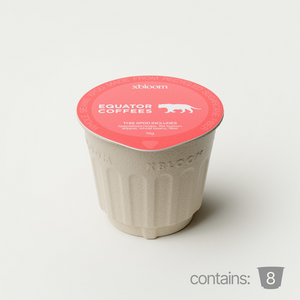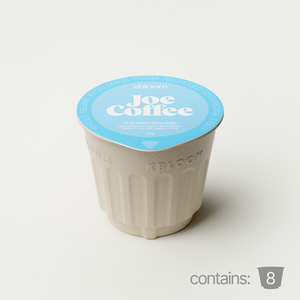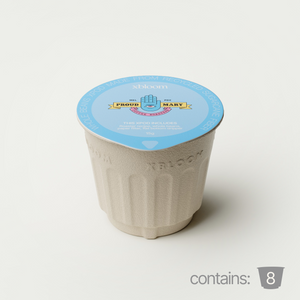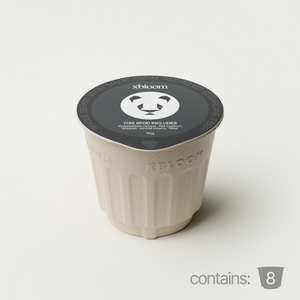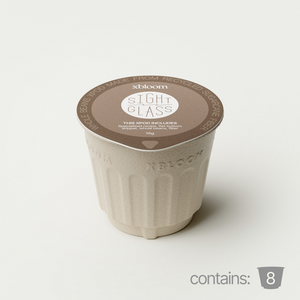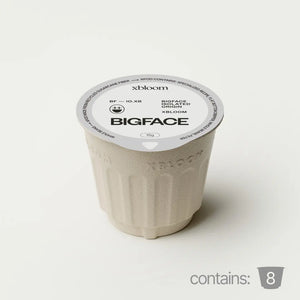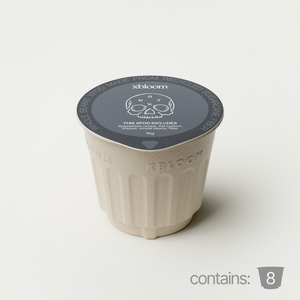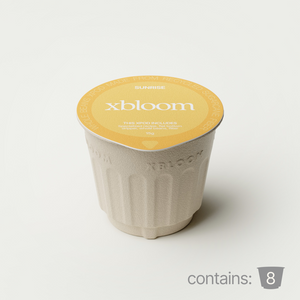There's a saying that goes, "the perfect amount of coffee is when it's just how you like it." But what if there's more to it than that? What if coffee drinkers are actually following a mathematical formula without realizing it? Is there a specific ratio of coffee to water that yields the best results?
Some people claim there is, but others say that it depends on your preference and brewing method. The truth is actually somewhere in the middle! Curious to see what works for you? Let's take a closer look at how the coffee-to-water ratio affects your brew!

What is the coffee to water ratio?
When cooking a meal, most of us follow a basic ratio of ingredients. For example, a standard recipe for chocolate chip cookies calls for one part sugar, two parts butter, and three parts flour. This same concept can be applied to coffee, where the coffee beans are the main ingredient and water is the supporting player.
The coffee to water ratio is the proportion of coffee grounds to water used in brewing and it’s an important variable of the whole process because it directly impacts the strength of your coffee. If you use too much water, your coffee will be watered down and taste weak. On the other hand, if you use too little water, your coffee will be too strong and might taste bitter.
Then again, you might use too much coffee or too little coffee and end up with an unbalanced cup. Both water and coffee quantities have a direct effect on the final flavor and tweaking them even just a bit will change the final brew in your cup.
What is the ideal coffee-to-water ratio for pour-over?
There is no single "right" coffee to water ratio, as it ultimately comes down to personal preference. However, when it comes to pour-over brewing, most experts agree that a 1:16 ratio is generally considered to be a good starting point. This means that for every 1 gram of coffee, you would use 16 grams (or milliliters) of water.
Of course, you can always adjust this ratio to suit your personal preferences.
From there, you can experiment with different ratios until you find the perfect brew for your taste buds. Some people prefer a stronger coffee and will use a 1:12 ratio, while others like a weaker coffee and will use a 1:18 ratio. It really all comes down to what you like!
Now let's look at 4 different scenarios of tweaking the coffee-to-water ratio:
You use more water than necessary
If you use too much water, your coffee will be diluted and taste weak. This is because there is less coffee concentrate in the brew. The water will extract the flavor from the coffee beans but it will cover it as well, resulting in a weaker cup of coffee.
You use less water than necessary
If you use too little water, your coffee will be too strong and might taste bitter. This is because there is more coffee concentrate in the brew. The water will extract more flavors from the coffee beans, resulting in a stronger cup of coffee.
You use more coffee than necessary
If you use too much coffee, your coffee will turn out stronger and might end up tasting bitter. This is because there is less water to extract the flavors from the coffee beans.
You use less coffee than necessary
If you use too little coffee, your coffee will be weaker and might taste watery. This is because there is more water to extract the flavors from the coffee beans.
It's simple math is it not? To help you test this yourself at home I will give you two recipes with different coffee-to-water ratios to compare:
Recipe 1
1 part coffee grounds (15 grams)
16 parts water (240 grams)
Recipe 2
1 part coffee grounds (7 grams)
16 parts water (240 grams)
As you can see, the only difference between these two recipes is the quantity of coffee. Both recipes use a 1:16 ratio but the second recipe has less coffee. When brewing these two recipes, you will notice that the first recipe will have a balanced flavor because there is more coffee in the brew.
By contrast, the second recipe will yield a watered-down cup of coffee because there isn't as much coffee to extract. To avoid this, it’s best if you use a 1:16 ratio of coffee to water. Also, while brewing these two cups, don’t forget to use the slow pouring technique in order to have the most accurate results for the comparison. [1]
So, what is the ideal coffee-to-water ratio? It all comes down to personal preference! Some people like their coffee strong while others prefer a weaker cup. It all comes down to finding the perfect ratio for your taste buds. Now that you know how to adjust the coffee-to-water ratio, it's time to experiment and find your perfect brew!
Frequently Asked Questions
What happens if I brew without a coffee to water ratio?
If you brew without a coffee to water ratio, your coffee will be either too strong or too weak. This is because the water will extract more or less flavors from the coffee beans depending on the amount of water used.
What else affects the final flavor in my cup?
There are many factors that affect the final flavor of your cup of coffee. This includes the type of coffee beans used, the grind size, the brewing method, the water temperature depending on the type of roast you brew[2], and the pouring technique.
I want to use a different ratio for my coffee. How do I adjust it?
To adjust the ratio, you can either use more or less coffee or more or less water. It all depends on your personal preferences. If you want a stronger cup of coffee, use less water. If you want a weaker cup of coffee, use more water.
Final Thoughts
We all have our own preferences when it comes to coffee, but what about the science behind making that perfect cup? Is there a “golden ratio” for coffee brewing or is it all up to personal preference? According to most experts, there is no one-size-fits-all answer - it really depends on your taste and the type of coffee you’re using.
However, we did include some guidelines to help you experiment with different ratios and find what works best for you. So get brewing and see which ratio gives you the perfect cup of pour-over every time. And don’t forget to let us know what you think!
